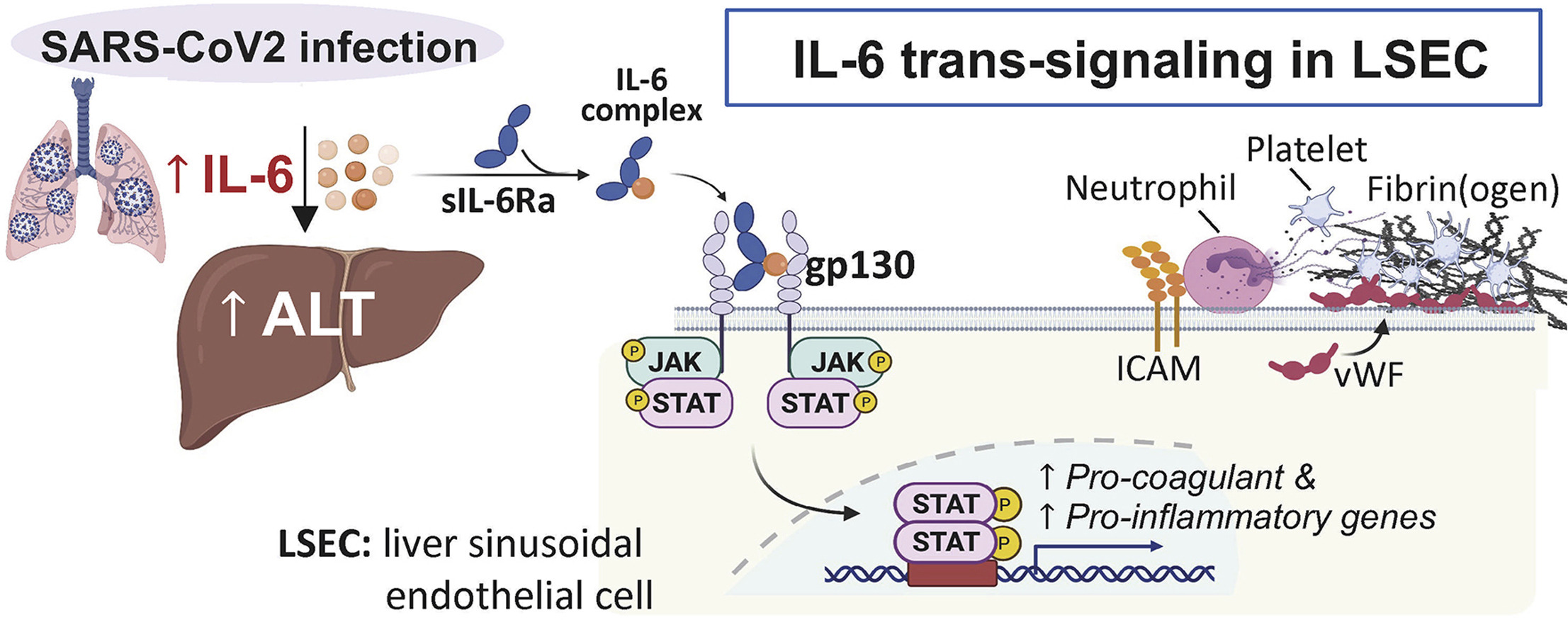How COVID-19 damages the liver
A collaboration between researchers from Yale University and Papa Giovanni XXIII Hospital, Italy has made it possible to analyse and reproduce the pathological mechanism by which COVID-19 causes liver damage.
Crucial role of cytokine IL-6 identified
The pathological process that damages the liver in COVID-19 patients is an alteration of the vasculature due to the excessive production of interleukin IL-6, a cytokine that regulates the body's immune response. Analyses on an animal model in US laboratories have reproduced the entire process for the first time, thus confirming the crucial role of the cytokine IL-6 and the description of the mechanism of action developed by researchers at the Papa Giovanni XXIII Hospital, Italy on the basis of the analysis of data and X-rays from patients who died in the city of Bergamo due to COVID-19 in 2020.
The collaboration between researchers from the prestigious University of Yale, New Haven, Connecticut (USA) and the Papa Giovanni XXIII Hospital in Bergamo has made it possible, for the first time, to analyse and above all reproduce the pathological mechanism by which the virus causes liver damage in COVID-19 patients. This study confirms the key role played by the cytokine IL-6 and endotheliopathy, i.e. the inflammation of the walls of the endothelium lining the blood vessels, which is responsible for the liver damage associated with severe and fatal forms of COVID-19.
In other words, the SARS-CoV-2 virus induces the endothelial cells of the blood vessels supplying the liver to produce a protein called interleukin IL-6, which in normal situations acts to regulate immune processes. When its production is dysregulated and excessive, it can lead to abnormal inflammatory states. In the case of COVID-19, this storm leads to an inflammatory state (endotheliopathy) and blood clotting within the vessels.
To arrive at these results, histological liver samples from 43 patients who died at Bergamo Hospital in the spring of 2020 were evaluated. This is currently the first study ever published in an animal model involving the largest numerical sample of human tissues from patients who died of a COVID-19 infection.
"Markers of endothelial cell and platelet activation - factor VIII, fibrinolytic enzymes, D-dimers, von Willebrand factor (VWF) antigen - have indicated a link between liver damage, coagulopathy and endotheliopathy," explained Aurelio Sonzogni of the Pathological Anatomy department at Papa Giovanni XXIII Hospital. The cytokine IL-6, through a process called 'trans-signalling', causes an increase in anticoagulants (factor VIII, vWF) and inflammation. It also generates an increase in platelets in endothelial cells. We detected inhibitory action by the natural inhibitor gp130, by the drug ruxolitinib, which had been administered in some of these patients, and by particular antibodies (STAT1/3 siRNA). We passed this sequence of data and this model on to our colleagues at Yale, who tested it in the laboratory and confirmed our hypothesis.
One of the largest clinical studies to assess the relationship between liver damage and SARS-CoV-2 found that of 2,273 patients, 45% had mild, 21% moderate and 6.4% severe liver damage. Patients with acute liver damage were at increased risk of admission to intensive care (69%), intubation (65%), renal replacement therapy (33%) and mortality (42%). The role of endothelial cell inflammation had already been hypothesised, but in the case of the liver it had never been demonstrated in tissue.
Previous studies had so far focused mainly on coagulopathy, i.e. the increase in thrombotic and microvascular complications generated by the immune system's inflammatory response and resulting from the 'cytokine storm' induced by the SARS-CoV-2 virus. No study had directly analysed the damage on liver samples and correlated it with clinical data.
Now, the study by the Italian and US scientists once again emphasises the role of endotheliopathy as the main cause of liver damage as opposed to coagulopathy, precisely because it would be the cause of the latter.
This conclusion suggests that early identification of endotheliopathy and therapeutic strategies to reduce its inflammatory acceleration could improve the treatment of severe disease. The study also confirms that IL-6 may more generally be a potential target for the targeted therapy of COVID-19 also because the damage appears to be ubiquitous, i.e. spread throughout the body, not limited to the lung. This is the path already taken by some clinical trials, which are focusing on finding effective drugs such as IL-6 inhibitors.
References:
1. Matthew J. McConnell, Nao Kawaguchi, Reiichiro Kondo, Aurelio Sonzogni, Lisa Licini, Clarissa Valle, Pietro A. Bonaffini, Sandro Sironi, Maria Grazia Alessio, Giulia Previtali, Michela Seghezzi, Xuchen Zhang, Alfred Lee, Alexander B. Pine, Hyung J. Chun, Xinbo Zhang, Carlos Fernandez-Hernando, Hua Qing, Andrew Wang, Christina Price, Zhaoli Sun, Teruo Utsumi, John Hwa, Mario Strazzabosco, Yasuko Iwakiri. Liver injury in COVID-19 and IL-6 trans-signaling-induced endotheliopathy. Journal of Hepatology. May 12, 2021. DOI:https://doi.org/10.1016/j.jhep.2021.04.050
2. Cremaschi D. Covid-19, a study with Yale shows how the virus attacks the liver. ASST Papa Giovanni XXIII Communication Office. 13/05/2021
